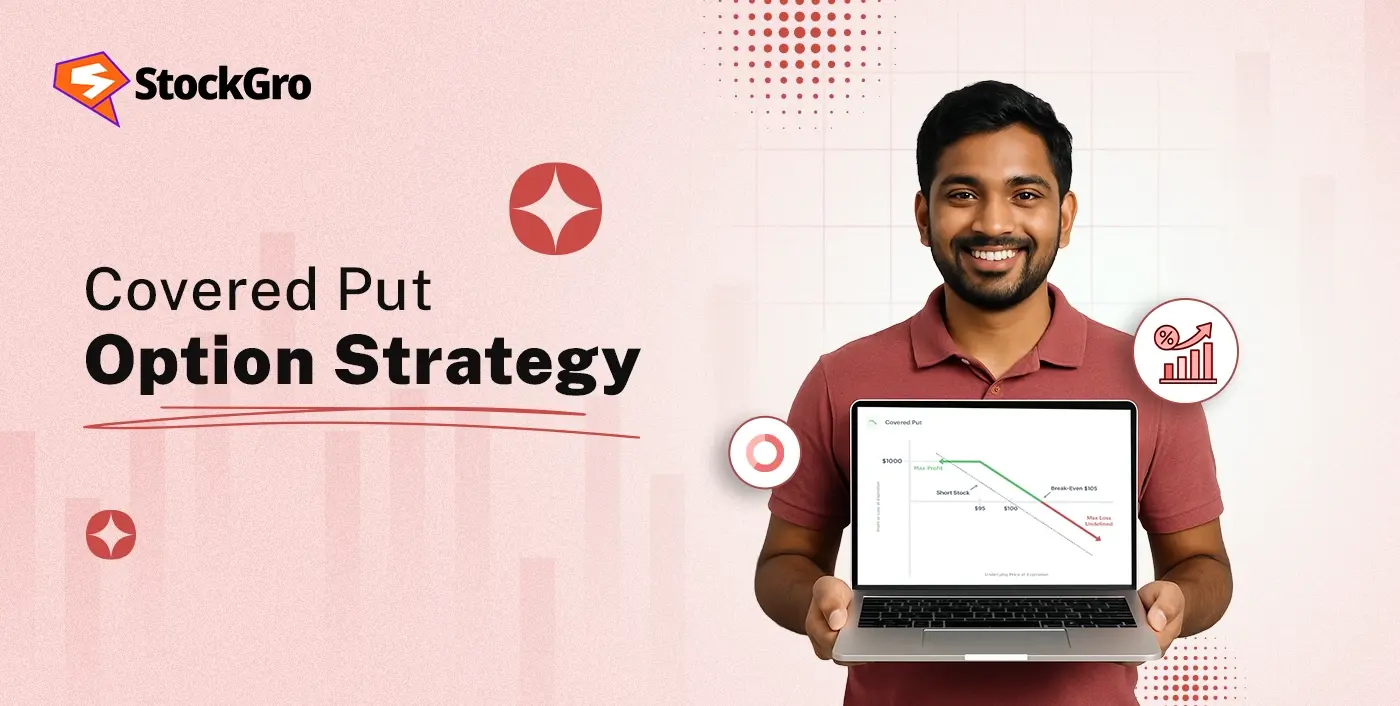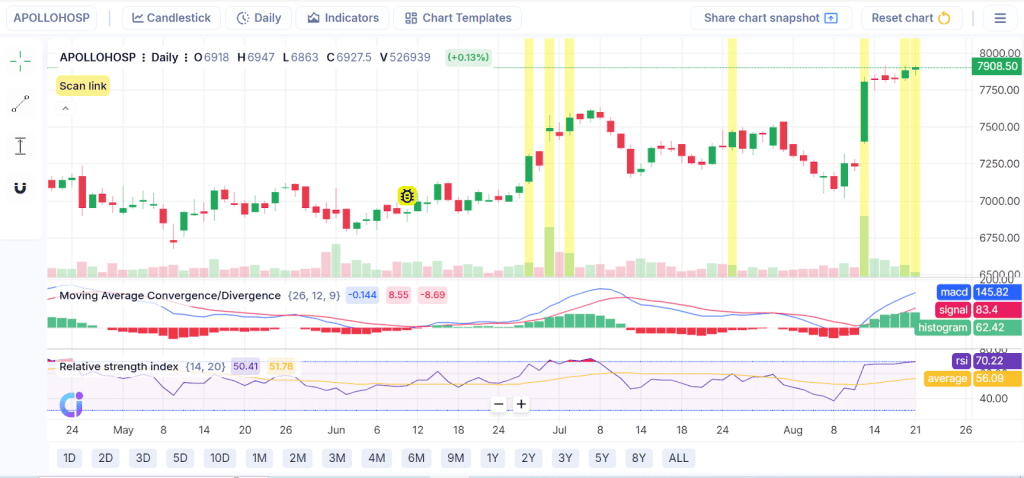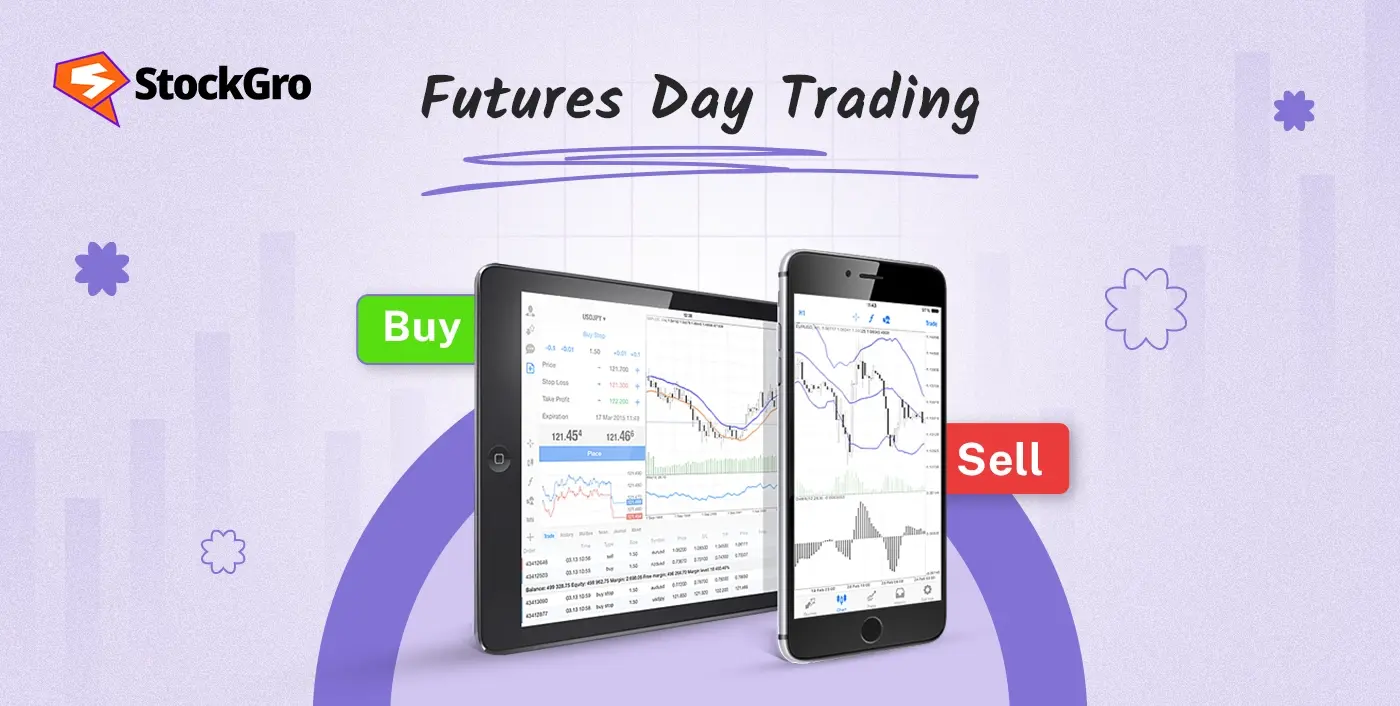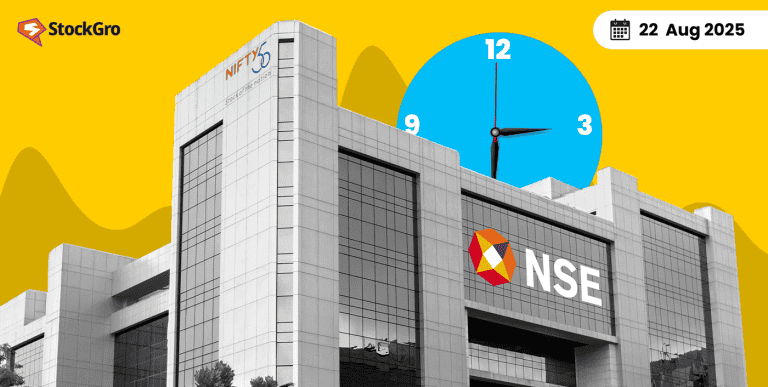
Options trading brings a variety of strategies intended to generate profit, protect positions, or speculate on market conditions. One impactful but less commonly applied strategy is the covered put option strategy. While many investors are aware of covered calls, covered puts work inversely, letting investors generate premium income and potentially profit from a neutral or bearish market simultaneously. Understanding the function of the covered put strategy, its risks, and optimal conditions is important for skilled investors seeking additional income or hedging tools.
In this blog, we’ll discover more about the covered put options strategy, including how it functions, how it differs from cash-secured puts, risks, gains and losses, and real-life examples to help you use the strategy with efficiency.
What Is a Covered Put Option Strategy?
A Covered Put is an options strategy where you short a stock and sell a put, with undefined risk and limited profit potential. A covered put option is all about two concurrent situations: shorting stock and selling a put option on the same stock. Essentially, you own a short stock position while collecting a premium by selling a put against it in options trading. The term “covered” determines that the short stock position covers the potential obligation of the put option.
In contrast with a covered call, which profits in a riskless or neutral market, selling a covered put can be advantageous in bearish or neutral markets, since you gain if the stock price declines or remains unchanged. The gained premium makes additional income, and the short stock with put lets you profit from a falling price.
Significant factors are:
- Pairing short stock with sold puts.
- Generates income with an option premium.
- Beneficial in a stable or declining market.
- Forces the investors to repurchase if the put is implemented.
How a Covered Put Works: Short Stock + Put Premium
To apply a covered put option strategy:
1. Short the Asset: Assume a price drop while borrowing shares and trading them in the market.
2. Sell a put option: Sell a put contract with a set price commonly beneath the latest stock price, letting you collect premium immediately.
Mechanics in Practice
- Short Stock Position: Imagine you short 100 shares of XYZ at ₹1,500 for every share, where your short gains ₹100 per share, if it falls to ₹1,400.
- Sell Put Option: Sell one put option with a set price of ₹1,450 for a premium of ₹20 for every share, where you receive ₹2000 (₹20 X 100 shares).
If the stock remains near ₹1,500, then there’s no profit or loss, but the collected premium is purely profit. The short gain and the put may expire with zero value if the stock declines. If the stock rises, you incur short-term losses, but the put premium income recovers some loss.
Basically, this tool helps investors make money while maintaining exposure to price falls.
Key Differences: Covered Put Vs Cash-Secured Put
You must know that a covered put and a cash-secured put are not the same thing. They both involve selling puts, but in diverse setups and risks.
- Covered Put: Involves a short stock with put, along with selling a put, where a rising stock brings exposure to unlimited risks. The short stock covers the put’s possible compulsion.
- Cash-secured Put: In a cash-secured put, you sell a put while keeping enough cash to buy the asset if exercised. Risk is capped in buying the asset at the set price minus the premium gained.
Profit & Loss: Premium Income, Breakeven & Risk
Premium income
You receive the put premium beforehand, which adds to potential returns and can be considered as the basic layer of profit.
Breakeven Point
Breakeven is capped in the short stock entry price minus the premium earned. Let’s take the previous example:
- Short stock at ₹1,500
- Put strike ₹1,450
- Premium ₹20
Breakeven for this short stock position is (₹1,500 – ₹20) = ₹1,480.
Risk Profile
- Upside risk: Unlimited. You may face extreme losses in the short position if the asset value significantly spikes.
- Downside Potential: Limited to the asset possibly dropping to zero, where the maximum profit is the total of the short stock decline and the premium.
Advantages of Covered Puts
1. Generates premium income: Writing (selling) puts brings instant cash inflow.
2. Gain from the neutral or bearish market: While other strategies leverage solely on price decline, here the premium lets you profit even in the sideways market.
3. Flexible Tactics: Can be modified or paired with other trades for speculation or hedging.
4. Improves short strategy: Adds profits to short positions that might otherwise stay idle if the stock doesn’t show a sharp movement.
5. Mitigates risks: The premium you gained lowers net exposure to the short position, bringing partial protection against moderate price hikes.
Risks & Limitations
While covered puts option strategy brings advantages, it also brings significant risks:
1. Unlimited upside risk: A sharp spike in stock price can result in unlimited losses, only partially covered by the premium.
2. Assignment risk: If the put is exercised, you must buy the stock at the set price, possibly increasing exposure.
3. Margin demands: To maintain a short position, brokers demand a sufficient margin. Failing to meet margin calls can make liquidation obligatory at uncertain prices.
4. Volatile market: Sudden price hikes can result in losses beyond the premium earned.
5. Intricacy: Simultaneous management of short stock position and sold puts, demand experience, and continuous monitoring.
Investors must evaluate risk tolerance cautiously before using a covered put.
When to Use Covered Put Strategy
Covered put options strategy works best for:
- Bearish sentiment or neutral viewpoint: Advantageous in bearish options strategy, when the trade is sideways or the stock declines.
- Market volatility: Collecting premiums helps balance possible swings.
- Hedging existing short positions: Selling puts generates additional income while maintaining short exposure.
- Income-focused approach: Premium income can generate a consistent cash flow for active investors.
Real-World Example Scenario

The stock has surged to over ₹7,900 according to the APOLLOHOSP chart, which shows high momentum and an RSI above 70, indicating overbought conditions. Given these high levels, a trader who anticipates a reversal or flattening out could sell the stock short and buy a put at a lower strike, like ₹7,500, to profit from the premium.
While the put premium protects returns for short stocks in the event of a market decline or consolidation, losses for these stocks could exceed the minimal protection provided by the option premium if the rally persists upwards.
Optimal Conditions & Strategy Tips
1. Choose a bearish or sideways stock: Covered puts function best when the stock is moving sideways or trending down. If you’re not ready to manage higher risk, avoid strong uptrends.
2. Pick proper strike: Selling put options a bit below your short stock entry helps amplify premium income while limiting assignment risk.
3. Track expiry date: Option time decay speeds up when they approach expiry, plan trades to benefit from quick premium erosion.
4. Check news events: Economic data, profits, or corporate announcements can influence sudden price fluctuations.
5. Pair with technical study: Use RSI, support or resistance zones, moving averages, and trend indicators to adjust entries and exits.
6. Balance position size: Keep positions manageable to avoid extreme risk in an unfavourable stock position.
7. Review frequently: Keep an eye on the market and balance your strategy accordingly.
Advanced Considerations & Alternatives
- Rolling the covered put: To maintain premium collection, increase duration by buying back near-expiration puts and selling fresh ones.
- Pairing with other options: Protective calls can limit upside risk on the short stock.
- Applying synthetic alternatives: Collars or cash-secured puts bring limited risk alternatives for traders not ready for unlimited upside risks.
- Hedging strategies: Combining spreads or long calls can reduce volatility exposure in downside hedge.
Covered puts are versatile but require careful management of timing, margin, and assignment risk. Investors must be disciplined to track positions and balance strategies as required.
Conclusion
The covered put option strategy is an exclusive technique for investors seeking earnings in a neutral or bearish market. By pairing a short stock position with a sold put, investors can generate premium income while benefitting from price declines. However, the strategy brings unlimited upside risks, assignment potential, and margin requirements, making risk management obligatory.
Traders who are willing to track positions actively, use proper strikes, and account for market volatility, covered puts can boost income, complement bearish views, and add flexibility to trading decisions. Like any other advanced option strategies, it is most effective if used with a transparent strategy and proper risk management.
FAQs
A covered put option strategy means you’re shorting a stock and selling a put option on the same stock simultaneously. You get some extra money from selling put, which helps lower the cost of holding the short position. Investors apply this strategy and earn money in bearish or sideways markets, as profit increases if the stock price drops or remains unchanged. It pairs the advantages of premium collection with short stock exposure, offering a well-formed approach to bearish trading with definite income possibilities.
A cash-secured put involves selling a put and holding sufficient cash to purchase the stock simultaneously, if assigned. No short stock is involved, and the strategy profits if the stock stays above the set price. On the contrary, a covered put applies to a short stock position combined with a sold put, targeting profit from a premium income and declining stock. While both generate earnings from selling puts, the covered put carries direct short stock exposure, making it more suitable and aggressive for bearish markets.
A covered put’s maximum profit is limited to the premium earned from selling the put and earnings from the short stock if it falls to zero. However, the maximum loss can be significant with the indefinite rise in the short stock, where the put limits some risk. Breakeven occurs when the combined short stock and option positions offset the gathered premium, making the strategy riskier than a cash-secured put, but it attracts confident traders in a stock’s downward movement.
Covered puts work best in bearish or sideways markets where you expect a stock to decline or trade in a narrow range. Investors may apply it before anticipated bad news, income failures, or macroeconomic events that could drop the stock price. It’s not ideal in bullish conditions unless you’re ready to face substantial risk. Combining technical analysis with market sentiment can increase timing, letting investors generate premium income while taking advantage of expected price drops.
If the stock price rises sharply, covered puts bring unlimited loss risk, as the short stock position loses value. For the sold put, assignment risk occurs if the stock drops beneath the strike. Then you might have to buy back shares to adjust your position. Market volatility, misjudged price movement, or sudden news events can eliminate gains. While premium income helps a bit, the combined short stock and put position exposes you to potentially large losses in unfavourable market conditions.
Assignment risk arises when the sold put is exercised, obliging the trader to buy back shares at the strike price. With a covered put, your gain could be less, or your losses could be bigger, as it alters the short stock exposure. Investors must track expiration dates and market directions to lessen unexpected assignments. Selecting proper strike and timing can lessen the possibility of being assigned, while mindfulness of corporate actions, profits, or extras is crucial to managing the combined short stock and option positions successfully.
A covered put option strategy performs best in bearish or sideways trending markets. They benefit from stable to falling stock prices, where the short stock gains value while the sold put collects a premium. Upward price swings can produce unlimited losses, making highly volatile or bullish markets riskier. Investors often seek stocks close to overbought conditions, resistance levels, or imminent negative news. Merging technical indicators like moving averages, RSI, and support or resistance studies helps improve timing and lessen exposure to unexpected reversals.

